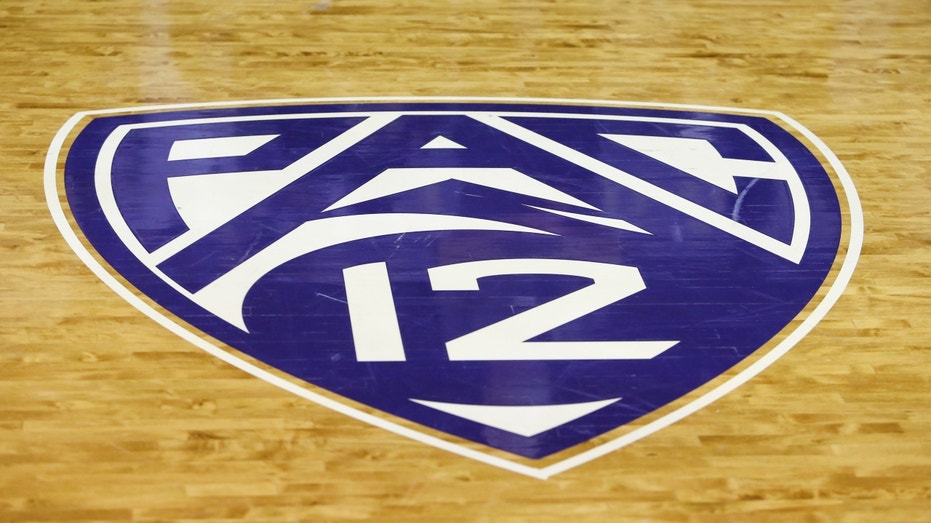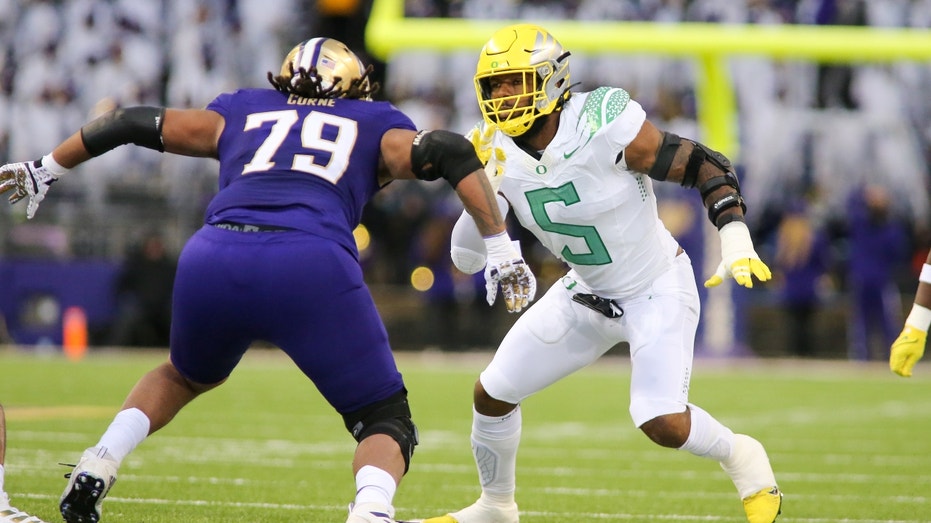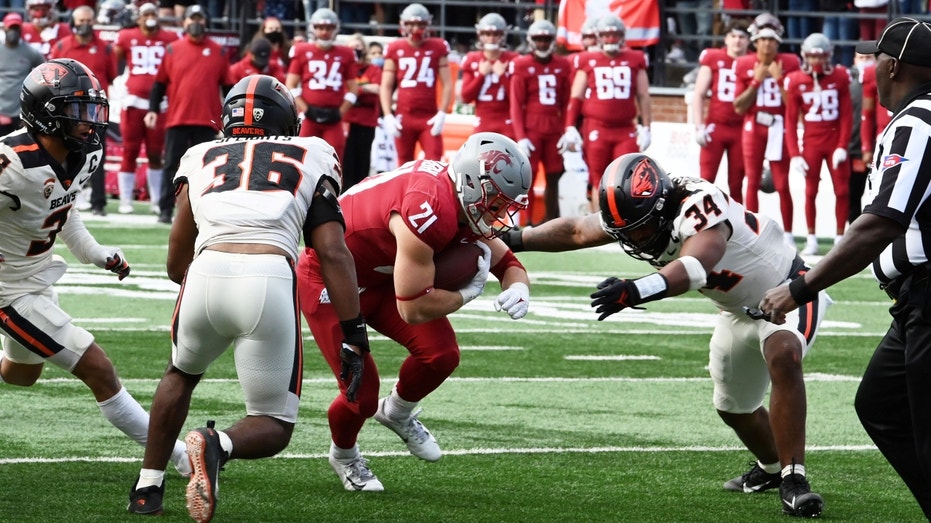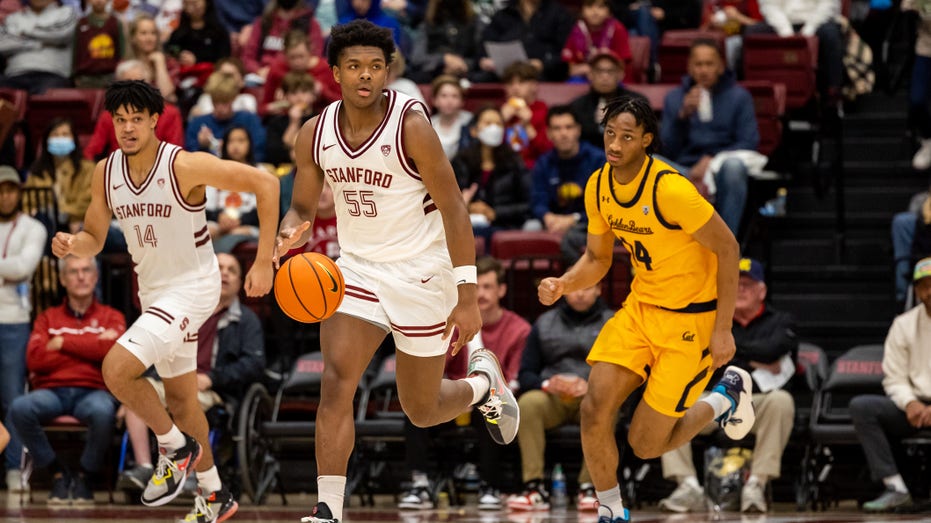College sports realignment rips apart historic conference
The Pac-12 exodus comes after the conference lost its presence in Los Angeles and struggled to secure a media rights deal
ESPN, PENN Entertainment roll the dice on a $2 billion sports betting deal
JMP Securities analyst Jordan Bender discusses the industry-changing deal between Disney's ESPN and PENN Entertainment on ‘The Claman Countdown.’
The big business of college sports has been roiled in recent weeks by a renewed wave of realignment that ripped apart one of its most historic conferences and has left several programs facing an uncertain future.
The Pac-12 Conference, which touts itself as the "Conference of Champions" and traces its roots to the formation of the Pacific Coast Conference in 1915, shed six of its remaining 10 member schools over the past two weeks as programs sought long-term financial stability.
The latest wave of realignment in college began in earnest a little more than two years ago when Oklahoma and Texas announced they would depart the Big 12 for the SEC, which has a more lucrative media rights deal. Last year, it gathered steam when Pac-12 mainstays UCLA and USC announced they would leave for the Big Ten, the SEC’s closest financial peer, while the Big 12 added four programs to replace those it lost to the SEC.
The loss of UCLA and USC, and with them the second-largest media market in the U.S., put the Pac-12 in a precarious position as it neared the end of its media rights deal, which is due to expire at the end of the 2023-24 academic year. Pac-12 Commissioner George Kliavkoff, who joined the conference in 2021, sought to secure the best possible deal for the conference’s remaining 10 members without the Los Angeles market as a draw to media partners.
SEC COMMISSIONER GREG SANKEY EXPRESSES SADNESS OVER PAC-12 COLLAPSE

The Pac-12 conference is left with four remaining members after UCLA and USC were joined by Oregon and Washington in departing for the Big Ten, while Colorado left for the Big 12 with Arizona, Arizona State and Utah. (Jacob Snow/Icon Sportswire via Getty Images / Getty Images)
Kliavkoff was also confronted with a tightening market for sports media rights, as he took over the negotiations at a time when major sports networks were less able to finance the sort of lucrative deals they had already reached with the SEC and Big Ten. Projections by sports analytics firm Navigate have estimated those deals could distribute SEC schools $100 million annually and Big Ten schools roughly $90 million per year by the end of the decade.
Media rights are a major driver of revenue for college athletic departments. A database run by the Knight Commission and Syracuse University found that the share of the Pac-12’s annual revenue from media rights grew from 19% in 2012 to 35%, or over $399 million, in 2022. That amount exceeds ticket sales and donor contributions combined which accounted for 32%, or $370 million, of the Pac-12’s revenue in 2022.
Faced with a smaller-than-anticipated TV rights deal, Kliavkoff pursued a streaming deal with Apple. The AP reported that sources familiar with the Apple TV deal would guarantee Pac-12 schools about $23-$25 million with an escalator provision that would increase the payouts based on subscriptions to a Pac-12 streaming package.
UCLA’S CHIP KELLY SUGGESTS NOTRE DAME MODEL FOR ALL OF COLLEGE FOOTBALL
If the conference hit 2.5 million subscribers, the annual payout would have risen to $30 million — roughly the amount Big 12 programs receive from their TV deal. To close its budget gap with the Big Ten and SEC, the Pac-12 would have needed about 3.7 million subscribers to push payouts to $50 million.
| Ticker | Security | Last | Change | Change % |
|---|---|---|---|---|
| AAPL | APPLE INC. | 247.65 | +0.95 | +0.39% |
The Apple deal reportedly provided for a means of sublicensing games for linear TV networks but did not include a guarantee, which left it unclear whether the Pac-12’s members could land a suitable deal. That uncertainty prompted an exodus.
WASHINGTON STATE HEAD FOOTBALL COACH REACTS TO CONFERENCE REALIGNMENT: ‘WHAT ARE WE DOING?’

Oregon and Washington on Friday announced that they would join UCLA and USC in moving from the Pac-12 to Big Ten. (Jacob Snow/Icon Sportswire via Getty Images / Getty Images)
First, Colorado announced on July 27 that it would return to the Big 12, the conference from which it joined the Pac-12 over a decade ago, which added to the uncertainty.
The dominoes fell on Friday when Oregon and Washington announced they will move to the Big Ten while Arizona, Arizona State and Utah moved to join Colorado in the Big 12. Administrators at the schools departing schools emphasized the importance of exposure through linear TV broadcasts in addition to stable cash flows as a driving factor in their decisions.
"Parts of [the proposal] were very compelling and exciting, and it was Apple, in our backyard," University of Arizona President Robert Robbins said at a media availability Monday. "But the base price — the guaranteed price — the fact that there was no linear and that it was subscription based, we were trying to think, ‘Well, it’s going to be like selling candy bars for Little League or Girl Scout Cookies.’"
CAL HEAD FOOTBALL COACH REACTS TO PAC-12 DEPARTURES: ‘REALLY KIND OF SHOCKING’
"When you have a deal that people are saying that one of the best aspects are that you can get out of it in two years, that tells you a lot," University of Washington President Ana Mari Cauce said on a conference call. "This was about national visibility for our players. Being on linear TV so they can be seen and have national exposure."

Washington State and Oregon State are among the Pac-12 programs facing an uncertain future. (Robert Johnson/Icon Sportswire via Getty Images / Getty Images)
Following Friday’s announcements, the Pac-12 Conference released a statement that read, "Today’s news is incredibly disappointing for student-athletes, fans, alumni and staff of the Pac-12 who cherish the over 100-year history, tradition and rivalries of the Conference of Champions. We remain focused on securing the best possible future for each of our member universities."
The Pac-12’s diminished ranks have left the four remaining programs — Cal, Stanford, Oregon State and Washington State — in search of a path forward. The schools could join another conference together or individually, merge with the nearby Mountain West, or seek to rebuild the Pac-12 with new additions. It remains to be seen whether those schools will be able to find an arrangement that allows them to avoid cuts to their financial department budgets.

Stanford and Cal are two of the four remaining Pac-12 programs. (Bob Kupbens/Icon Sportswire via Getty Images / Getty Images)
In the meantime, those four athletic departments are faced with lingering uncertainty for student-athletes and staff alike.
GET FOX BUSINESS ON THE GO BY CLICKING HERE
The Oregonian reported that Oregon State has 600 athletes and 179 employees. Cal has about 900 student-athletes and 300 employees, while Washington State has roughly 500 student-athletes and 215 employees, officials from those schools told FOX Business. Similar information regarding Stanford's athletic dept. was not immediately available.
The Associated Press contributed to this report.




















